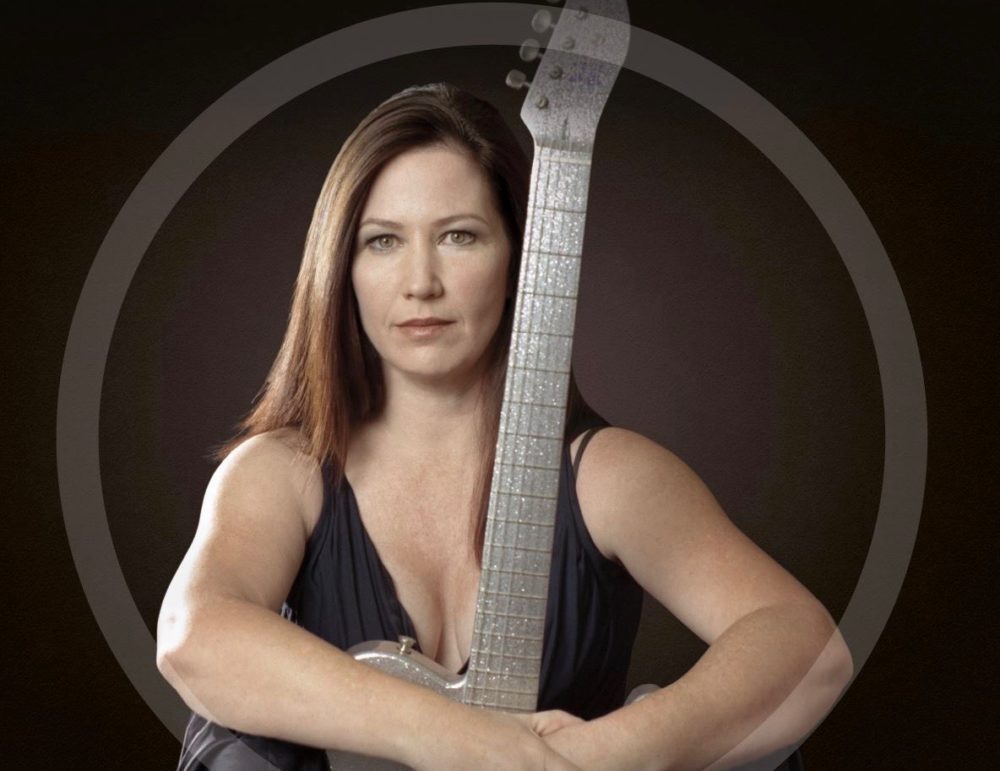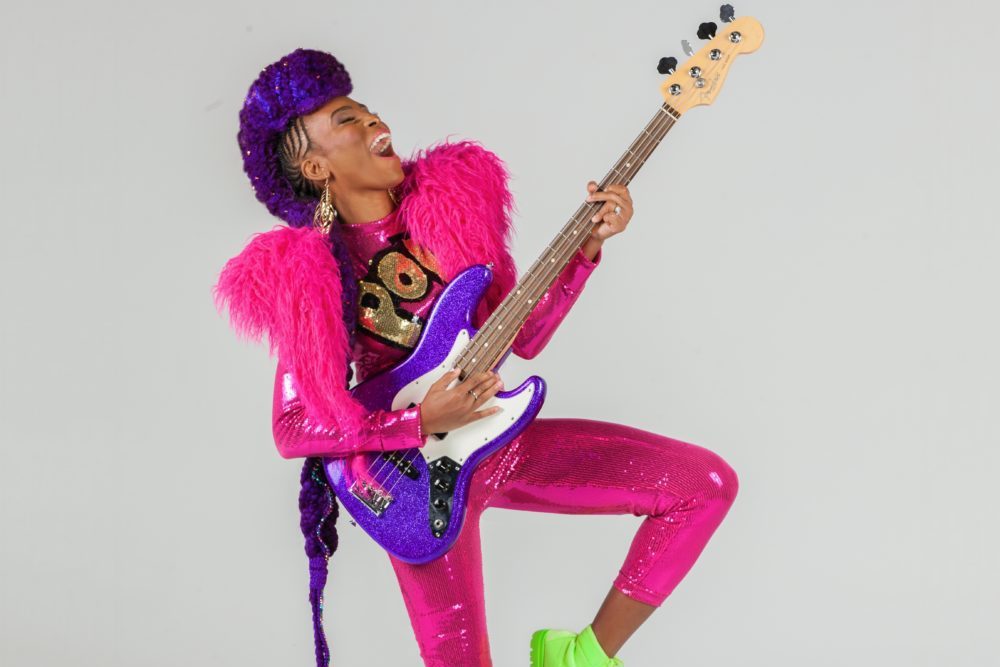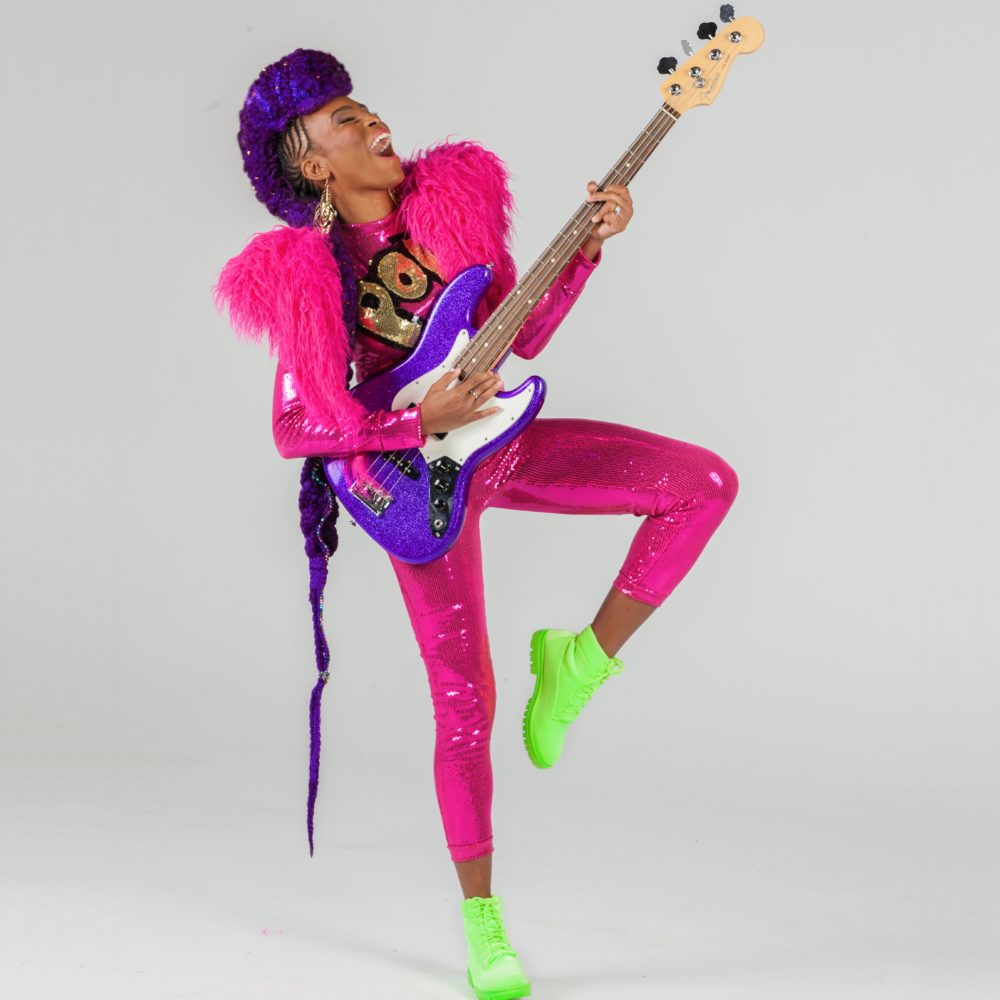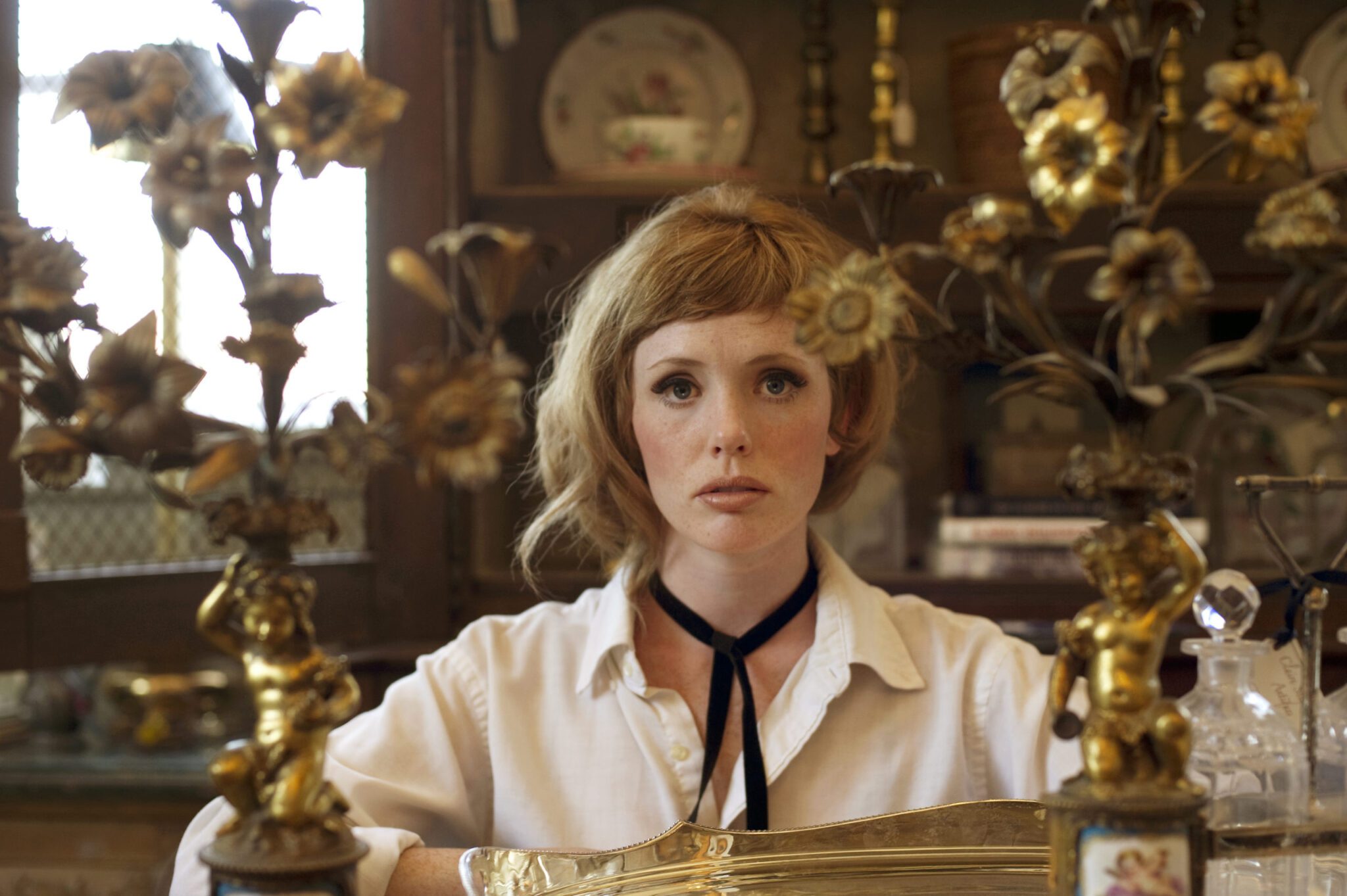

Ginger Canzoneri couldn’t believe it. The band she managed, the Go-Go’s, was one of the hottest groups in Los Angeles, regularly drawing adoring, sellout crowds at top clubs. But despite the acclaim, they couldn’t seem to land a record deal. Even more flabbergasting was the reason why. “I had a file folder of rejection letters from record labels in Los Angeles [saying] ‘Thanks, but all-girl bands just don’t sell records.’” Canzoneri says, still sounding mystified, in The Go-Go’s, a new documentary about the band that recently debuted on Showtime. The quality of the music, enthusiastic audiences, and media raves didn’t matter. It’s a band of girls? Nope!
But as we know, the Go-Go’s and Canzoneri ended up having the last laugh. IRS Records finally signed the group, and their debut album, Beauty and the Beat (1981) became the first album by an all-female band, who wrote their own songs and played their own instruments, to top the Billboard charts, with classic singles “We Got the Beat” and “Our Lips Are Sealed” also rocking the Top 40.
And for most people, that’s where the band’s story starts: the moment they crashed into the mainstream and became “America’s pop sweethearts” (a label that still makes them cringe). But The Go-Go’s, directed by Alison Ellwood (History of the Eagles; Magic Trip: Ken Kesey’s Search for a Kool Place), opens up that story, finally putting the band’s history, and all their accomplishments, in their proper context. It’s a film that re-establishes the band’s importance, and their influence; a film that says, yes, the Go-Go’s mattered.
The band’s early period is arguably the most exciting in the film. The Go-Go’s started out as a part of the scene that centered around legendary LA club the Masque in the late ’70s, hanging out with the likes of the Germs and X. “I thought it was common knowledge that the Go-Go’s came from the streets of LA, the LA punk rock scene,” says Kathy Valentine, the band’s bassist, speaking on the phone during a whirlwind day doing press for the documentary. “And I was a little floored when Alison said, ‘No, this is a narrative that I don’t think has been told.’ And then I started realizing – for so many people, their only knowledge of the Go-Go’s is videos, MTV appearances, and pop songs on the radio.”
“There never would have been the Go-Go’s without the punk rock scene in Los Angeles,” Jane Wiedlin (rhythm guitar, vocals), says in the film. There’s a riveting clip of the group’s first lineup playing a St. Patrick’s Day gig, vocalist Belinda Carlisle’s black hair, black attire, and fierce glare totally at odds with her sunny, California Girl persona of just a few years later. Torn t-shirts and ripped fishnets were de rigueur; even a trash bag could be a fashion accessory. “The punk scene gave me an outlet to act out and be the badass that I thought I was,” Carlisle observes in the film.
“We saw no reason why we couldn’t be just as good as the boys, or men,” she goes on to say. “We weren’t going to be anything but a great band.” The band’s growing ambition led to original drummer Elissa Bello, who’d refused to quit her job to become a full-time Go-Go, being replaced by Gina Schock (Bello admits her dedication to the band wasn’t as strong as the rest of the group; “I stuck my toe in the water, but I never dove in all the way”).
And then one day, lead guitarist/vocalist Charlotte Caffey brought in a new song: “We Got the Beat.” Despite its obvious strengths, she admits to be “terrified” to bring it to the group because it was so obviously a pop song; “I thought, ‘These guys are going to throw me out of this band.’” But the group recognized its merits, and it indicated a shift in musical direction. Then Wiedlin brought in “Our Lips Are Sealed,” a song she’d written based on a letter from her erstwhile boyfriend, Terry Hall of the Specials, that was another foray into pop. It was too much for original bassist Margo Olavarria, who felt the group was moving away from their raw punk roots, with the motivation now being, she says, “Less about art and more about money.”
But Kathy Valentine, who would end up replacing Olaverria, recognized that the ultimate power of a band rests in the quality of their songs, and that the Go-Go’s songs were built to last. “The thing is, a well-crafted song is a well-crafted song,” she points out. “You could slow down a Buzzcocks song, or you could take ‘God Save the Queen’ — the elements of a good song are there, whether it’s played fast or snarled or pounding 16th notes. So the Go-Go’s, the bones of our songs were well-crafted, hooky, with smart lyrics.”
She credits Richard Gottehrer, who produced their first two albums, with giving their records their trademark sound. “Richard said, ‘Let’s give these melodies some room. Let’s slow it down a little bit.’ That was the big change. And now, when our music gets played, it doesn’t sound dated. And I’m so grateful that Richard knew that this needed to be a classic sounding band that didn’t adhere to some kind of trend of what was going on in studios in the ’80s. And a lot of bands do sound super dated. And I feel to this day, when I hear [our] music, I can’t believe how well it stands up.”
The group was not so happy with how others wanted to market them, once fame arrived. Their discomfort with their first Rolling Stone cover shoot clearly still bothers them nearly 40 years later. They reluctantly agreed to don men’s underwear for the shoot, but were mortified by the juvenile headline slapped on the cover: “Go-Go’s Put Out.”
“It was actually very weird to be sexualized,” says Valentine. “I know that guys had crushes on us and stuff, but it’s not like we were out there dressing suggestively and gyrating around and grabbing our crotches. We were just kind of hopping around. The whole weird thing with the first Rolling Stone cover was, ‘Here they are in their underwear, and they’re still not sexy!’ Here they are without their clothes on, in their underwear, and it’s still the girl next door. Why isn’t it enough that we could just put our clothes on and smile and take a picture? Why is that not enough for this band? It’s enough for guys to go stand by a wall, or stand on a railroad track, or walk down the road, or all those photos you do with the guys. So that was annoying.” A later cover featured the band fully clothed, but with another questionable headline: “Women On Top.”
In addressing this and other controversial issues in the band’s career, The Go-Go’s allows the band to reclaim their own story on their own terms. They’d all felt that VH1’s Behind the Music episode on the band had been exploitative. “It had the format and structure of a reality TV show, where you form-fit the content that you shoot to fit the structure and narrative,” Valentine says. “Every time the show would go to a commercial it would say, ‘When we come back, more about Charlotte’s dance with the devil!’ I mean, it was so dramatic. It really focused on Charlotte’s drug addiction. They like to focus on the salacious parts.”
Conversely, while the band members openly discuss their substance abuse issues in the documentary, it’s not the focus. Bello and Olavarria get to tell their side of the story about their dismissals, and Canzoneri frankly admits her pain when she was sidelined after the group took on high-powered management. The publishing difficulties that led to the first break-up are also detailed.
Before work could even begin on the documentary, Ellwood had to get all the Go-Go’s together again. Valentine had been fired from the band in 2012, not rejoining until 2018. She used the time away from the group to write All I Ever Wanted: A Rock ‘n’ Roll Memoir, published earlier this year. “In writing that part of my story, I was really able to come to a mindset where I’m not gonna let ugliness taint and ruin for me what was one of the biggest joys of my life,” she says. “So when the band invited me back, and things healed in that regard, it was so much easier for me to let go and forgive and take my rightful place again, because of writing the book.”
Revisiting her past also allowed her to serve as an impromptu fact checker during her interview for The Go-Go’s. “There were lots of times they had to stop the camera, because I’m like, ‘No, no, you got that wrong,’ or ‘No, that date was this,’ or ‘No, this is what really happened.’ I knew my shit, because I had exhaustively documented and researched my facts!”
Though the film packs a lot into its 97-minute running time, it still doesn’t cover the entire story, skimming over the past 30 years since the 1990 reunion. But the ending is in the present day, showing the band at work on their first new single in nearly two decades, “Club Zero.” It’s an instantly catchy song made for the dance floor. But pay attention to the lyrics, and you’ll see this bright and optimistic song is also an anthem of empowerment, a deliberate choice on the part of the band members.
“When we decided to write a song for the documentary, it was a big deal, because we’ve never generated material while living in five different places, so it was challenging,” Valentine explains. “But the first thing we did, was we came up with topics that we felt we could write and sing about that we were comfortable with at this stage, as Go-Go’s in our 60s. And at the top of the list was what was going on with the patriarchy, and #MeToo and Times Up. There was just this strong feeling that, without being preachy, we wanted an anthem that really summed up the attitude of so many people, which is, we’re fed up. Things have to change. And that is the overriding sentiment; there’s large swaths of people that have just had it, whether it’s racial injustice or income inequality or women tired of being marginalized or LGBTQ [rights].” Valentine says the band went for a “Love Shack” vibe, except that Club Zero was a place where, as the lyrics say, zero fucks are given.
“I think the timing is kind of uncanny. It’s really grown on me, and I’ve started to feel like this could be really the right song at the right time,” Valentine says. “I don’t really dial up my expectations ever about anything anymore. I just kind of always expect the worst and hope for the best. But I don’t know, there’s something about ‘Club Zero’ that just feels really right for the time.”
While celebrating the Go-Go’s breakthrough of being the first all-female band to top the US album charts, the documentary also points out that no other all-female band has done so since, begging the question: why not? “I think about it a lot,” says Valentine, “because when I first became a musician, that was my longing, was to see all-female bands at the top. It’s just harder for women. If she gets to that point in her life when she starts a family and stuff, she’s not gonna go leave her kid at home. And unless you’re successful on a level of a Chrissie Hynde or whatever, it’s really hard. It’s a struggle for women in the professional realm all across the board.”
“That doesn’t mean there’s not really cool, awesome female bands out there. There’s tons of them,” Valentine adds. “Probably every city has got a cool female band in it. But for every one female band there must be hundreds and hundreds of guys starting bands.” As The Go-Go’s demonstrates, the band continues to provide inspiration to countless female musicians. “We’re not a super active band now, but I still think we put out a really positive, empowering message for women that as you get into your 60s, you can still be relevant. Maybe not in the way the pop culture defines the way a musician or an artist should be relevant, but there’s something about this band that, if I wasn’t in the Go-Go’s, and I was in my 40s or 50s, I would be inspired by seeing us,” Valentine says.
“The endurance of the band is in itself such an achievement. I’m so grateful that the documentary highlights the endurance, not only of the songs and the music, but of the band,” she adds. “I’m really grateful for what we are and what we have accomplished. I’m really grateful that these women are in my life, and that we are close, and that we care about each other, and that old hurts and betrayals have been forgiven, and that we have healed. That’s what I’m grateful for.”
The Go-Go’s is available now on Showtime.




